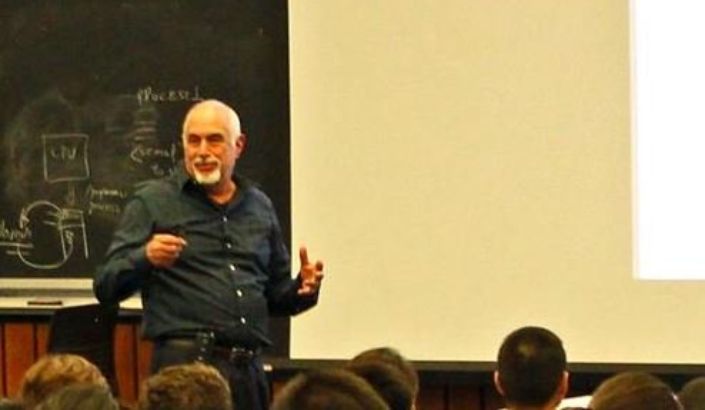One of the most unique ways to get rich is inventing a scientific product that’s indispensable, and that’s definitely the case for Andy Hildebrand, the inventor of Auto-Tune. The pitch-correction software has been used for nearly every chart-topping album made in the past 20 years.
As loathed as Auto-Tune is by many, it made Hildebrand a rich man. As of 2024, Andy Hildebrand has a net worth of $20 million. So let’s explore his history as well as that of his unique creation.
Early Days
Hildebrand is the first to admit he wasn’t a normal kid. He was an easily-distracted California bookworm who drove his teachers to drink. To escape that fate they’d sometimes stick him in the back of the classroom to daydream.
When he snapped out of his stupor, though, Hildebrand quickly got serious about education. He earned a Ph.D. in electrical engineering in 1976, and used his expertise in linear estimation theory and signal processing to help Exxon pinpoint drilling locations.
From Oil to Sound Engineering
Several years after working for Exxon, they approached him with an emergency regarding drilling for the Alaskan pipeline. When Hildebrand realized that he’d come up with a solution that saved the company $500 million, it dawned on him that he should start a venture of his own.
That venture was Landmark Graphics, which pioneered an advanced graphics workstation that grew to be an industry standard. In 1989, Hildebrand sold Landmark to Halliburton for $525 million, at which point he was set for life, so he decided to go into music.
Hildebrand had been a working studio musician, so he definitely knew what he was doing when was fooling around with sampling synthesizers. He helped improve the sounds to the point where orchestras became unnecessary for film scores, but the market ultimately collapsed on him.
Inventing Auto-Tune
That didn’t stop Hildebrand from pursuing his next venture, Antares Audio Technology. That led to the invention of Auto-Tune, and the pitch correction software quickly found a place in the music industry.
It was Cher who became the unlikely poster gal for Auto-Tune. The product smoothed out her erratic pitch in her 1998 album, “Believe,” and Auto-Tune was subsequently marketed as the “Cher effect.”
Auto-Tune’s controversial history also included a bizarre lawsuit by a rapper named T-Pain who believed he was being used as advertising material for Auto-Tune. Time magazine has dubbed it one of the 50 worst inventions of the 21st century.
The hatred of Auto-Tune throughout the music industry is growing exponentially, but Hildebrand doesn’t seem to be bothered by the backlash. He’s cashed in on his talent, and Auto-Tune just happens to be the ridiculously unpopular vehicle for that.
Personal Life
Compared to his professional life, Hildebrand’s personal life has been stable. He married Georganna Hildebrand and settled in Santa Cruz, where he plays the flute, composes music and donates to technical education programs in the area.
